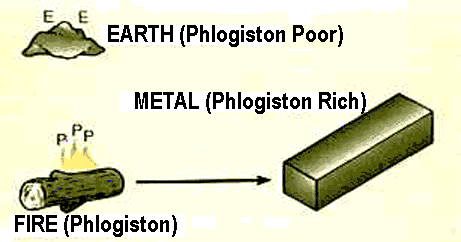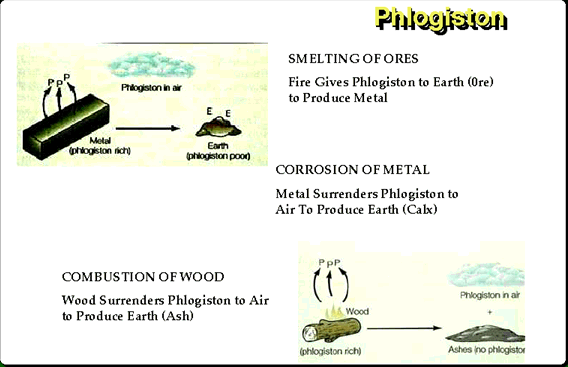| THE THEORY OF PHLOGISTON
The failure to understand combustion was
a major obstacle to progress in chemistry at Lavoisier's time. A theory of chemical change
must be able to explain combustion. The theory of Phlogiston was the first real attempt to do so.
This theory formulated by Georg Ernst Stahl was accepted by most chemists at the time.

According to the Phlogiston theory metals and other combustible substances contained weightless Phlogiston. Earth was poor in Phlogiston and metals were rich in Phlogiston.

The theory explained that when a metal is calcined or roasted in the presence of air, it turns into a powdery substance called calx. This change was explained as a loss of phlogiston into the air. When heated in presence of charcoal the process would be reversed. The phlogiston would supposedly pass from the charcoal to the calx restoring the metal.
A serious problem of the theory was that the calx formed when a metal such as magnesium burns weighs more than the metal from which it is formed. The proponents of the Phlogiston theory explained this problem by saying that in some metal Phlogiston has negative weight.
In 1977 Lavoisier proved that the Phlogiston theory was incorrect in his paper entitled Memoir on Combustion in General.
|


